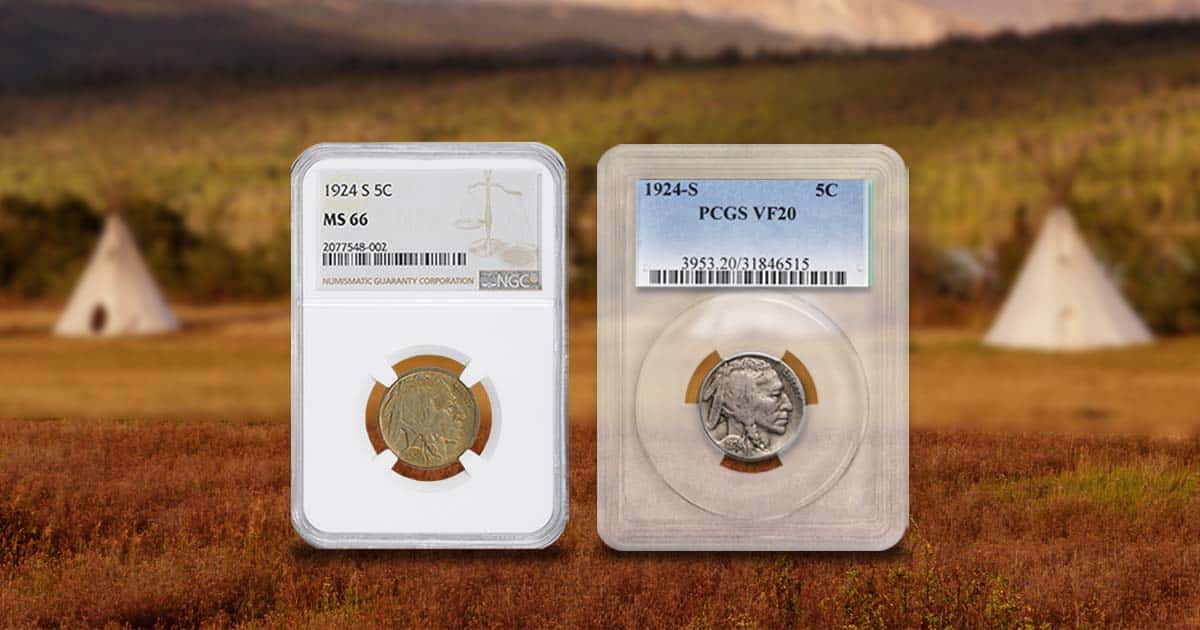
Nickels can be rare for many reasons, including low mintages, key dates, mint errors, and special issues. The nickel’s rarity, condition, and market demand are the primary driving forces for the value assigned.
This article will not attempt to identify all nickel key dates but there are key dates included in this, as key dates are inherently rare.
What Nickels Have Low Mintages?
Among the Liberty nickels, the 1912-S Liberty nickel is the lowest mintage, with only 238,000 coins produced at the San Francisco Mint. These are incredibly valuable, even in the Good (G-4) grades.
The 1913 Liberty Head nickel may be the most elusive and rare. Only five known examples of this coin exist, and two belong to museums.
In 1926, a scant 970,000 Buffalo nickels were issued from the San Francisco Mint.
The lowest mintage Jefferson nickel is the 1950 issue from the Denver Mint, which is considered a key date issue with only 2,630,030 coins issued.
What Nickels Have Minting Errors?
Buffalo Nickels With Minting Errors
The Buffalo nickel (1913-1938) series has some of the most popular errors of the 20th century. These primarily came about as the result of overpolished dies and low relief. The error coins that were issued in the Buffalo nickel series may command a premium in todays world as the coin populations shrink with age.
1916 Buffalo Doubled Die Obverse Nickel
There are only about 200 known examples of the 1916 doubled die mint error Buffalo nickel in Very Fine (VF) grades. Mint state (MS) varieties of this issue are exceptionally rare, with fewer than 15 known, and the two highest graded are in MS-64 condition.
This minting error produced doubling around the chin, feathers, and lips of the Native American on the obverse. The most noticeable doubling is found in the date and is most pronounced in the last two letters of the date, the 16.
The 1919-S Buffalo Nickel
The 1919-S Buffalo nickel has its own unique story.
The design of the Buffalo nickel had positioned the words FIVE CENTS on the reverse in a space too high. This positioning made it easy for the words to wear off the coin.
While this error was addressed by moving the buffalo to a line from a mound, there was a similar issue with the date on the reverse of the nickel. The date was positioned in a place that wore off easily.
Unlike the location of the buffalo on the Buffalo nickel, the date was not repositioned. Because of this, some of these coins may be harder to find than the mintage would suggest.
The 1937-D 3-Legged Buffalo Nickel
No list of rare nickels would be complete without a mention of the 1937-D 3-Legged Buffalo.
Have you ever been too good at your job? A Denver Mint employee polished the 1937 Buffalo nickel die so vigorously that the fourth leg of the buffalo on the reverse wore off!
While this issue was discovered and addressed quickly, many nickels had already been released.
There is not a known mintage of 3-legged Buffalo nickels, but among the 17,826,000 1937 Buffalo nickels issued by the Denver Mint, there are about 10,000 known surviving nickels. In higher grades, the rarity becomes apparent.
There are about 100 known in an MS-65 or greater condition and less than 1,500 in an MS-60 condition or greater.
Second to low mintages, minting error nickels have the greatest rarity. Some of these errors were corrected and therefore issued briefly, and collectors have scooped up others.
Other Issues of Rare Nickels
1883/2 Shield Nickel
This overdate error was caused by editing and reusing the 1882 dies, of which there at least five known dies.
1885-1886 Liberty Nickels
The 1885 and 1886 issues of Liberty V nickel are exceptionally rare and command a handsome price.
The 1885 V nickel has the second lowest mintage of the series next to the 1912-S issue. This, coupled with the fact that very few of these nickels were preserved, means they are exceedingly rare today.
The 1964 special issue nickel is rare because of a coin shortage in 1964, which led to a date freeze on the Jefferson nickel. To compound matters, the 1965 nickel was not minted, which made the 1964 nickel the last of its kind. There are only 40 known examples of the 1964 special issue nickel.
Interested collectors that would like to start their nickel collecting journey frequently start with coins like the 1964-D Jefferson Nickel BU. This is an exceptionally affordable and popular coin that allows beginners to find a new hobby that they will love.
Do you have questions about coins that you cannot find an answer to? Ask us and stay tuned for more APMEX Answers.




